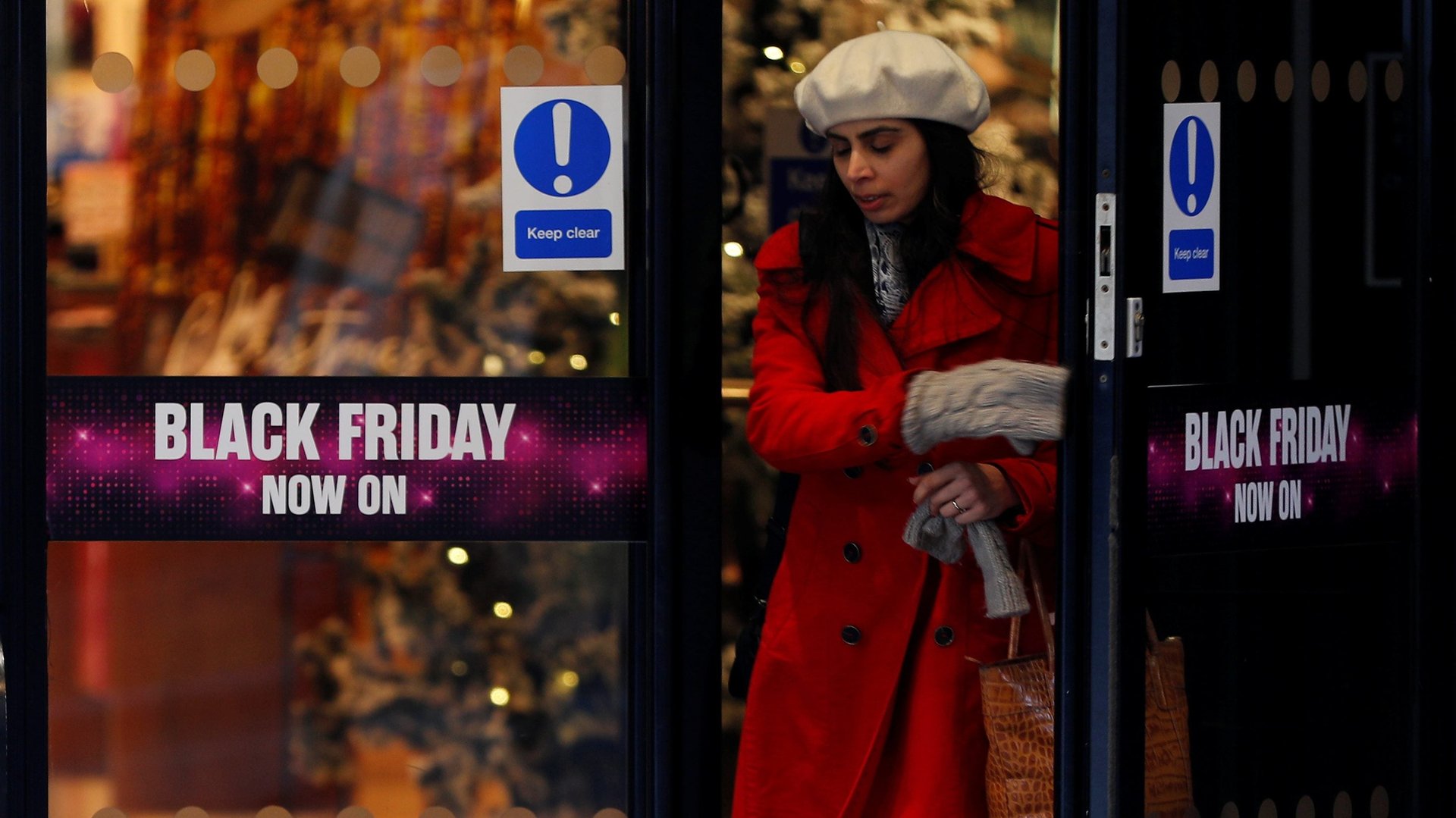Retailers feel the squeeze as Black Friday-type sales multiply around the globe
It was once a time-honored tradition for Americans, still half-full from Thanksgiving dinners, to head out the next day to stores for Black Friday sales.


It was once a time-honored tradition for Americans, still half-full from Thanksgiving dinners, to head out the next day to stores for Black Friday sales.
Now those sales aren’t just in stores and don’t wait for Friday anymore. At Amazon, Black Friday has already started, and lasts an entire week. Kohl’s, Nordstom, Macy’s, and Target will also start their sales early.
You need not even be in the US to take part in Black Friday. It’s gone global, as retailers in India, Colombia, Japan, Spain, the UK, Brazil, and more all hold their own.
There’s Cyber Monday, too, when retailers capitalize on the first day office workers are back in front of their computers. And none of these days even rank as November’s biggest sales event. That title belongs to Singles Day in China, the Alibaba-devised celebration of being single with a growing number of participating companies from around the world.
November’s and December’s sales are now global, and seem to keep getting bigger. For the retailers involved, they’re an opportunity to attract shoppers in a spending frenzy, but they can also be a curse.
Harm Ohlmeyer, Adidas’s chief financial officer, spoke frankly about the effect of these multiplying sales events on the company’s Nov. 6 call with investors and analysts. The discounts squeeze the company’s margins, which wouldn’t be such a problem if the sales were stable from one year to the next. But they aren’t. Singles Day is expanding in China every year, he said. There’s also China’s “Double 12” shopping event on Dec. 12. Each year new markets start doing Black Friday and Cyber Monday. “The sum overall, it’s an over-proportionate growth [relative to the overall growth in the market] that we have around these events in the fourth quarter,” Ohlmeyer said. “They are just getting bigger by nature.”
Blame the internet for the changing nature of these sales. According to Jess Huang, a partner in consulting firm McKinsey’s consumer retail practice, it’s increased their transparency, letting shoppers easily compare prices across retailers, while also making it easier for retailers to get their message to shoppers. That’s not entirely positive. “There’s so much digital communication about promotions and sales, there’s quite a bit of noise to break through to get to the consumer,” she says. “The bar for how you plan for and how you execute during the holiday season is rising.”
Retailers may resort to even more discounts or larger events to grab shoppers’ attention. Zalando, the European fashion giant, said on its Oct. 31 call with investors it aims to expand Black Friday and Cyber Week—not just Cyber Monday—as it pursues its growth targets. “Just like last year, we also want to make it a bigger, multi-day event, not just a single-day event,” chief financial officer David Schröder said.
Foot Locker CEO Dick Johnson, on the company’s earnings call Nov. 22 said Black Friday has become Black November because the deals start so early. The intensity of the sales, he said, “certainly puts pressure on everybody that sells product digitally.”
This year there’s extra pressure since there are six fewer shopping days between Thanksgiving and Christmas.
Even if retailers do feel some strain from the competition of holiday sales, they still benefit overall from the excitement and boosted demand the sales create, Huang says. It’s just that “more than ever, [they] have to be really thoughtful about where they invest their media dollars and promotional dollars,” she explains. It’s about reaching the right people with the right product at the right price, and the biggest sale doesn’t always win.